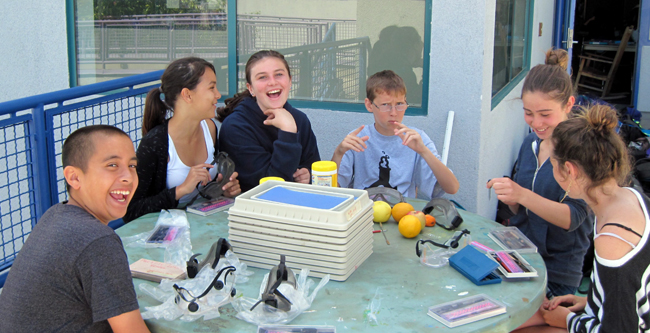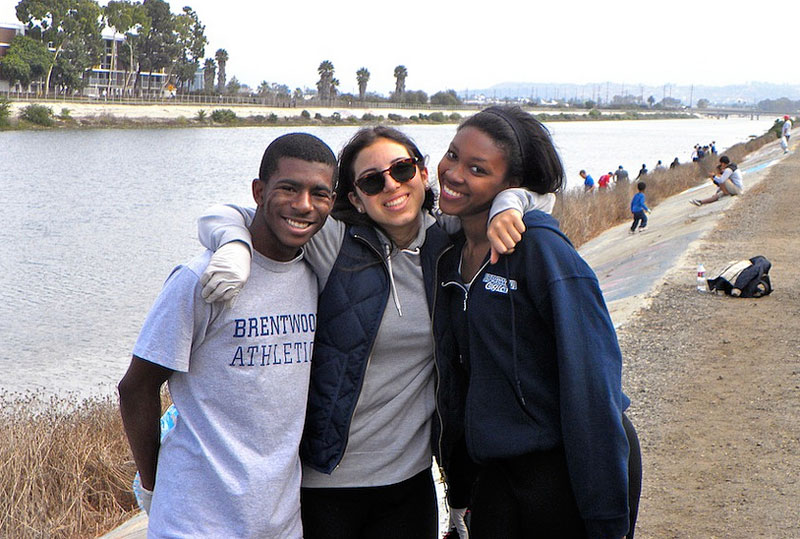We’re still glowing from a sunny Tuesday morning on the beach with a group of third graders from Parthenia Elementary School in North Hills.Yes, a late autumn sun contributed to the color in our cheeks, but the lasting glow comes from the generous assistance to our field trip programs provided by the Ella Fitzgerald Charitable Foundation and Duke’s Malibu.
The foundation and the iconic surfside restaurant support our Lunch n’ Learn initiative, designed to help foster a love of the ocean in students from the region’s underserved areas. The students’ transportation to the beach and the gift of a book for each child were provided through the foundation’s Fairy Godmother Grant program. After a morning of science-based ocean exploration, the kids were treated to a lunch hosted by Duke’s – with Hula Pie for all!
Meanwhile, Santa Monica Pier Aquarium volunteers do an amazing job at helping us keep our marine science education center spotless and volunteer Lennie Shelton took that responsibility above and beyond last week to give some of our artifacts a thorough cleaning. Set in super thick resin, the preserved skeletons and invertebrates had become so scuffed it was impossible to see what they were. Lennie gave these vital teaching tools a proper buffing – and he’s taken a second set home to buff out as well. Many thanks for the extra effort, Lennie!





